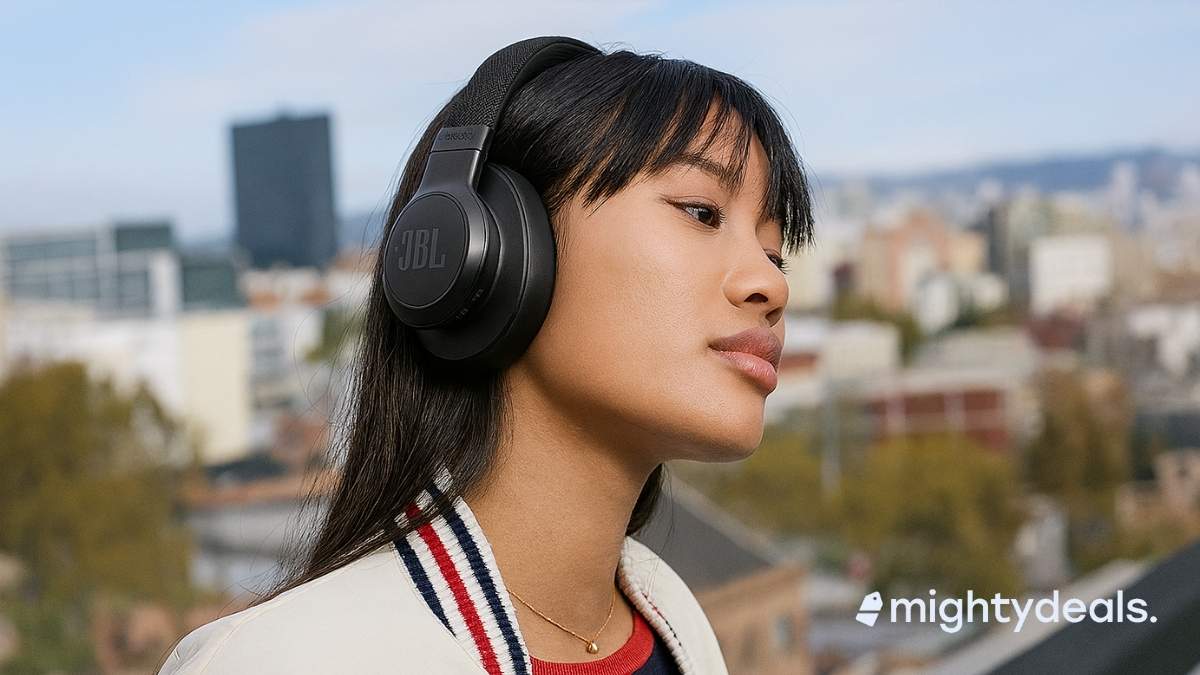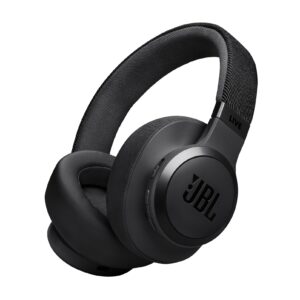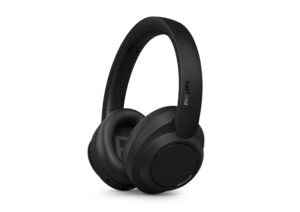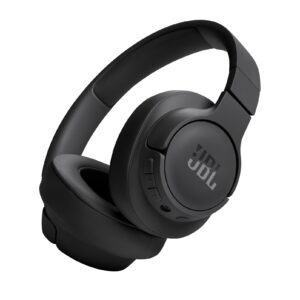We independently select all products and services. If you click through links we provide, Mighty Deals may earn a commission.
Headphones play an important role in live sound environments. Whether we’re working as stage performers, sound engineers, or event coordinators, the right pair can help us monitor audio clearly despite the noise and activity around us. Good headphones allow us to catch feedback, isolate issues, and make adjustments on the fly, ensuring the performance sounds as intended.
Live sound headphones are different from regular consumer models. They need to block out external noise, sit comfortably for long hours, and provide accurate, detailed sound. Durability is also a concern, since these headphones may be taken on and off frequently or used in hectic settings.
When we look for the best headphones for live sound, we pay close attention to fit, isolation, build quality, and sound clarity. These factors help us find headphones that will perform well on stage or in the mixing booth. We tested and researched several top options to find headphones that meet these critical needs.
Best Headphones for Live Sound
We’ve selected the top headphones for live sound to help you find reliable and clear options. Our picks are designed for comfort and strong sound quality during your performances or events.
1. JBL Live 770NC Headphones
For those seeking comfortable, versatile headphones that handle live sound with ease, the JBL Live 770NC is a sensible pick.
Pros
- Excellent balance of comfort and sound for long sessions
- Reliable noise cancellation with easy ambient adjustment
- Impressive battery life reduces charging hassles
Cons
- Touch controls can be overly sensitive
- Not water or sweat resistant
- Bulky fit may not suit every user
When we put on the JBL Live 770NC, the cushioning and headband stood out immediately; we didn’t feel any pressure through hours of use. The sound quality handles loud environments really well, keeping vocals and instruments clear without distortion. Turning on the noise cancellation made it much easier to focus during busy live events.
Switching between noise cancellation and ambient mode is simple and surprisingly effective. We could jump from quiet mix checks to real-time conversation without needing to take the headphones off, which came in handy during setup and troubleshooting. The headphones’ battery life is a clear plus—fifty hours with all features on meant we didn’t worry about recharging mid-event.
We did encounter a learning curve with the touch controls, which can be distracting if you accidentally pause playback. The headphones aren’t ideal for those who need to move around a lot or work outdoors, since sweat or rain could be a problem. Overall, for live sound work where comfort, clarity, and focus matter, these headphones perform reliably.
2. Philips 6000 Series Wireless Over-Ear Headphones
If we want wireless headphones that balance all-day comfort, solid sound, and noise cancellation for live sound needs, these are a capable option.
Pros
- Pleasant fit for long use without causing discomfort
- Impressive battery life supports every session
- Noise cancellation keeps things clear in loud venues
Cons
- Ear cups feel bulky after extended wear
- Noise cancellation isn’t as refined as premium brands
- App interface can be confusing at first
The first thing we notice with the Philips 6000 Series is the comfort. During long rehearsals or after a show teardown, the padded ear cups never pinch or distract us, so we can keep them on for hours. The headphones also collapse nicely, making them easy to toss in a bag.
Battery performance stands out, too. After a full week of use, including a couple of late nights at the venue and downtime listening, we didn’t need to recharge. The fast charge saves us when power is low, giving several more hours in just minutes.
Sound quality is more than adequate for live environments. Bass is full but not overwhelming, while vocals and instruments cut through clearly. The noise cancellation blocks out most of the background, although it doesn’t hush everything the way more expensive options do. We also found the controls simple in practice, but it took some time to get used to adjusting features in the app.
For anyone wanting comfortable headphones with strong battery life for event work or on-stage monitoring, these Philips over-ears make practical sense without breaking the bank.
3. JBL Tune 720BT
For anyone seeking reliable headphones with solid sound for live monitoring, the JBL Tune 720BT is a strong contender because of its comfort and clear bass.
Pros
- Extremely comfortable, even during long gigs
- Customizable sound settings with the JBL app
- Very long battery life
Cons
- Hinges feel somewhat fragile
- May lack the volume punch needed in very loud environments
- Wireless-only use can be limiting for some setups
When we tried the JBL Tune 720BT, the plush ear cups stood out immediately. Flexibility is another plus—these headphones fold up and fit right into our gig bag, which is great for those of us always on the move between venues or events.
Battery life is not something we had to worry about. We got through several hours of live sound work and still had plenty of charge left. The Bluetooth connection held steady, and the voice prompts when switching between devices made setup and adjustments quick.
The onboard button controls simplified volume tweaks and answering calls during rehearsals. One thing we noticed is the hinge design feels light, so some care is needed when packing and unpacking. While the bass is impressively clear, these headphones may not get quite as loud as needed on a noisy stage. Despite these drawbacks, the JBL Tune 720BT remains easy to recommend for those needing dependable, comfortable headphones for live sound.
4. TAGRY H08 Noise Cancelling Headphones
The TAGRY H08 is worth considering for anyone seeking reliable headphones with strong noise cancellation and long battery life at a budget price.
Pros
- Fast charging enables hours of use from just minutes plugged in
- Stays comfortable even during lengthy sessions, thanks to lightweight build
- Can be used both wirelessly and with a cable for flexibility
Cons
- Microphone quality feels lacking for calls or talkback use
- Bass might overpower other frequencies for some preferences
- Physical controls feel a bit basic and sometimes hard to distinguish by touch
We found the TAGRY H08’s battery performance to be a real highlight. After only a quick charge, we had enough power to use these for several hours straight. They kept going through a long event without us ever needing to worry about running out of juice.
The ear cups feel soft and don’t clamp down too tightly, which kept us comfortable through rehearsals and shows. When we needed to switch between wireless listening and using a mixer with a cable, moving between modes was simple and hassle-free. This made the headphones convenient for both travel and live mixing situations.
However, using the built-in microphone during calls or communication left us wanting more. Voices sounded muffled and distant, which isn’t ideal if we needed to use these on stage for talkback. Although the bass adds punch to music and helps block outside noise, finer details in mid and high frequencies get lost at times. For live sound, we want clarity as well as comfort, so while the TAGRY H08 delivers impressive value and comfort, more demanding users may want to look elsewhere for studio or critical monitoring.
Buying Guide
When choosing headphones for live sound, we need to look at comfort, durability, and isolation. Comfort is crucial since we’ll often wear them for long periods.
Isolation helps us hear clearly in loud environments. Closed-back designs are generally better for this.
Here’s a quick table comparing key features:
| Feature | Why It Matters |
|---|---|
| Comfort | Reduces fatigue during long use |
| Isolation | Blocks out external noise |
| Durability | Withstands frequent use and travel |
| Adjustability | Ensures a good fit for all head sizes |
| Portability | Easier transport and storage |
We should also consider the build quality. Strong headbands and sturdy cables will last longer and stand up to frequent handling.
Look for adjustable headbands and rotating earcups for a personalized fit. Lightweight models can help avoid strain during long gigs.
A detachable cable can be convenient for quick replacements. Foldable designs save space in gear bags.
Sound clarity is another factor. Headphones that allow us to hear all parts of a mix help us monitor performances more accurately.
Let’s keep simplicity in mind—too many features can distract from reliability. Stick to what fits our needs best.
Frequently Asked Questions
We find that choosing the right headphones for live sound means focusing on proven models, durability, and clear audio. Comfort, isolation, and reliability matter most for frequent use.
What are the top-rated over-ear headphones for live performance?
We recommend the Sennheiser HD 25 and the Audio-Technica ATH-M50x for live gigs.
Both models are durable, offer good sound isolation, and are widely used by professionals during shows.
Which headphones are recommended for professional live sound mixing?
The Sony MDR-7506 and Beyerdynamic DT 770 Pro are popular choices for sound mixing.
Both provide accurate sound, reliable build quality, and fit comfortably during long sessions.
What features should sound engineers look for in headphones for live sound events?
We look for closed-back designs to block out external noise and sturdy construction to handle rough use.
Comfortable headbands and replaceable ear pads are important for long wear.
How do professional studio headphones differ from standard headphones?
Professional studio headphones often have a flatter sound profile for more accurate listening.
They are built to last longer and usually offer better isolation than regular headphones.
What models compete with the Sony MDR-7506 for studio recording use?
The Audio-Technica ATH-M50x and Sennheiser HD 280 Pro are close competitors.
Each delivers clear sound, strong build quality, and dependable performance for studio work.
Which headphones are preferred for both mixing and mastering in studio settings?
We often use the Beyerdynamic DT 880 Pro and Sennheiser HD 650 for mixing and mastering.
These models offer clear detail, balanced audio, and comfortable fit, making them well-suited for extended sessions.





